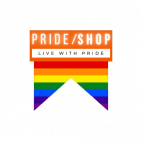In recent years, lesbian fans — often dubbed “lesbian stans” — have stepped into the spotlight, actively shaping pop culture from the inside out. Platforms like TikTok and Twitter have become vibrant arenas where their theories, edits, and passionate commentary ripple across fandoms. Their presence is powerful — but is this visibility a sign of true cultural shift, or just another wave of rainbow-flavored marketing?
Lesbian Stans: A Fandom Force That Can’t Be Overlooked
Once relegated to the shadows or decoded in subtext, sapphic narratives now have a vocal, connected community demanding real, unapologetic representation. This modern wave of lesbian stans isn’t just consuming media — they’re influencing it.
Take, for instance, the viral response to Kelly Clarkson’s off-the-cuff remark on her talk show: “I like my girls a little older.” Within hours, lesbian fans transformed this passing comment into a cultural moment. Reaction clips, themed edits, and fan theories spread rapidly, reframing it as a subtle nod to queer audiences. It’s a striking example of how fandoms reinterpret the smallest moments into powerful statements.
TV and Streaming: Where Queer Visibility Begins
Popular shows like Yellowjackets, Agatha All Along, and The Last of Us have prioritized diverse queer characters — particularly lesbians — in ways that were once rare in mainstream media. This isn’t accidental. Studios and showrunners are paying close attention to fandom behavior and the loyalty lesbian viewers bring to the table.
Lesbian stans are more than spectators — they build anticipation with edits, generate buzz online, and keep storylines alive between seasons. No wonder more creators are incorporating queer story arcs from the outset.
Recommended: Don’t Miss These Queer TV Series in 2025
A Double-Edged Sword: Visibility with Limits
Despite their cultural impact, lesbian fandoms still face systemic setbacks. Underneath the glossy rainbow marketing, many meaningful narratives fail to get sustained support. Series like First Kill and Paper Girls — both spotlighting queer love stories — were canceled prematurely, leaving fans feeling robbed of deeper, long-term representation.
Even when lesbian characters are on-screen, those who are butch, BIPOC, or gender-nonconforming are often pushed to the sidelines. Visibility is growing, yes — but inclusion still feels conditional.

🏳️🌈 Lesbian Pride Flag 90×150 cm
Celebrate your identity with this large lesbian pride flag. Ideal for marches, personal spaces, or community events.
The Power of Fandom vs. The Trap of Queerbaiting
Participatory fandom brings both passion and pitfalls. One increasingly criticized issue is queerbaiting — a tactic where creators tease queer pairings to attract LGBTQ+ audiences, without delivering on actual inclusion.
While it may boost engagement in the short term, it often backfires. Fans who invest emotionally are left feeling exploited when those storylines go nowhere. Ambiguity may fuel discussion, but it doesn’t offer the real representation lesbian audiences crave. Passion without payoff feels less like progress and more like manipulation.
Why Authentic Representation Matters
- Media shapes public perception — authentic lesbian representation fosters empathy and understanding.
- Young lesbians deserve role models who reflect the full spectrum of their stories and experiences.
- Fandom can spark change, but it should complement — not replace — institutional advocacy.
TV Series Transformed by Lesbian Fandom
| Show | Fandom Contribution |
|---|---|
| Yellowjackets | Significantly boosted visibility of queer characters through community fan support |
| Agatha All Along | Fans crafted queer-centric narratives, sparking widespread engagement and discussions |
| First Kill | Massive fan-led campaigns followed cancellation, highlighting passionate demand for lesbian stories |
Conclusion
Lesbian stans are no longer passive consumers — they are loud, visible, and deeply influential in shaping mainstream pop culture. But real progress means moving beyond fleeting moments and performative gestures. It calls for storytelling that is bold, genuine, and inclusive — the kind that resonates deeply, lasts longer than a season, and makes every lesbian viewer feel truly seen.

